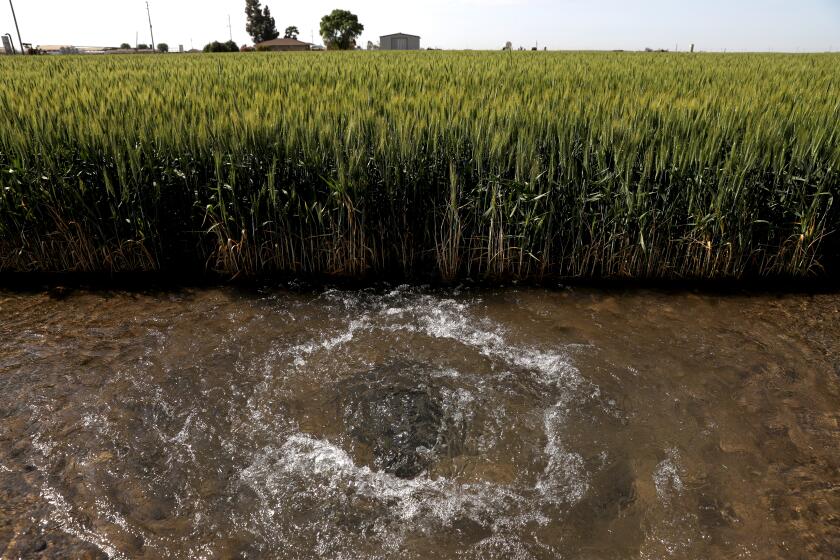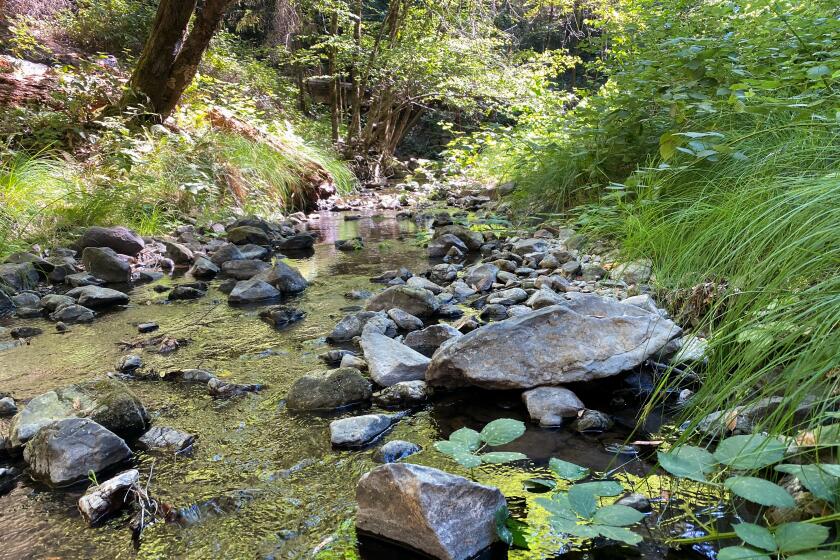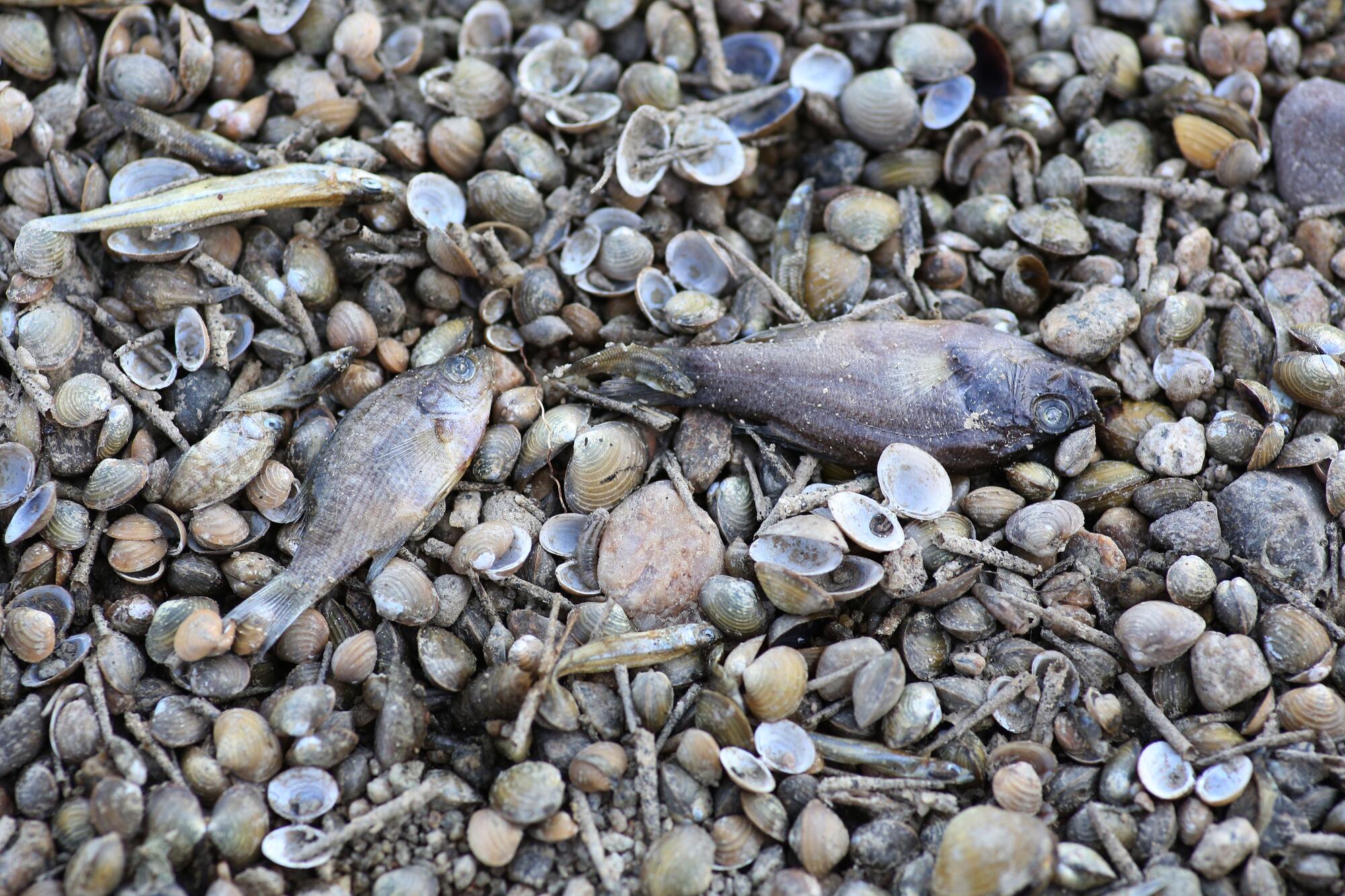
- Share via
BAKERSFIELD, Calif. — Over the last three weeks, ecologist Rae McNeish and her students have watched as a flowing river has abruptly dwindled to a dry riverbed.
While conducting biological surveys along the Kern River in Bakersfield, they have seen water retreat into stagnant pools and then vanish, leaving stretches of bare sand and cracked mud.
They have found some fish flopping helplessly along the banks, and masses of dead fish scattered on the riverbed by the hundreds.
“We’re all very surprised at how quickly things changed,” said McNeish, an associate professor of biology at Cal State Bakersfield. “It’s really sad to see.”
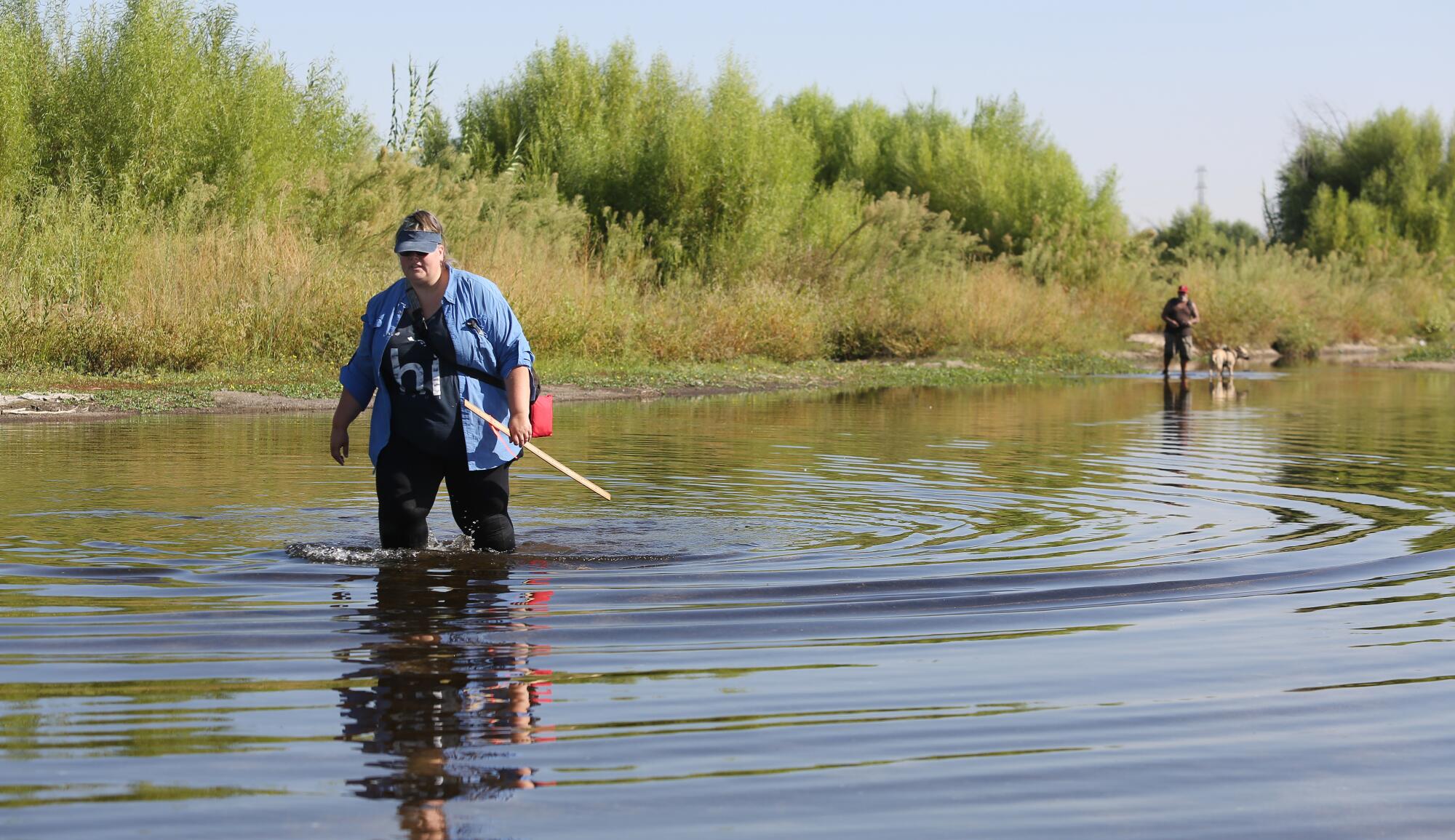
The sudden loss of the river has come as a shock in Bakersfield, where residents had grown accustomed to seeing water flowing past parks and beneath bridges after two wet winters. Some compared the rapid desiccation to the effect of turning off a giant faucet.
The collapse follows an appeals court ruling that cleared the way for city officials and water managers to reduce flows upstream, keeping some water behind a dam and sending other supplies to farms. The shutoff of water has dismayed and angered environmental activists, who have argued in court that chronic overallocation and a rigid water-rights framework have caused profound harm to the river and its wildlife.
McNeish and a group of graduate students have been documenting their observations of the disappearing river, and have counted more than 3,000 dead fish.
California wildlife officials are now investigating whether the drying of the river constitutes a violation of state law.
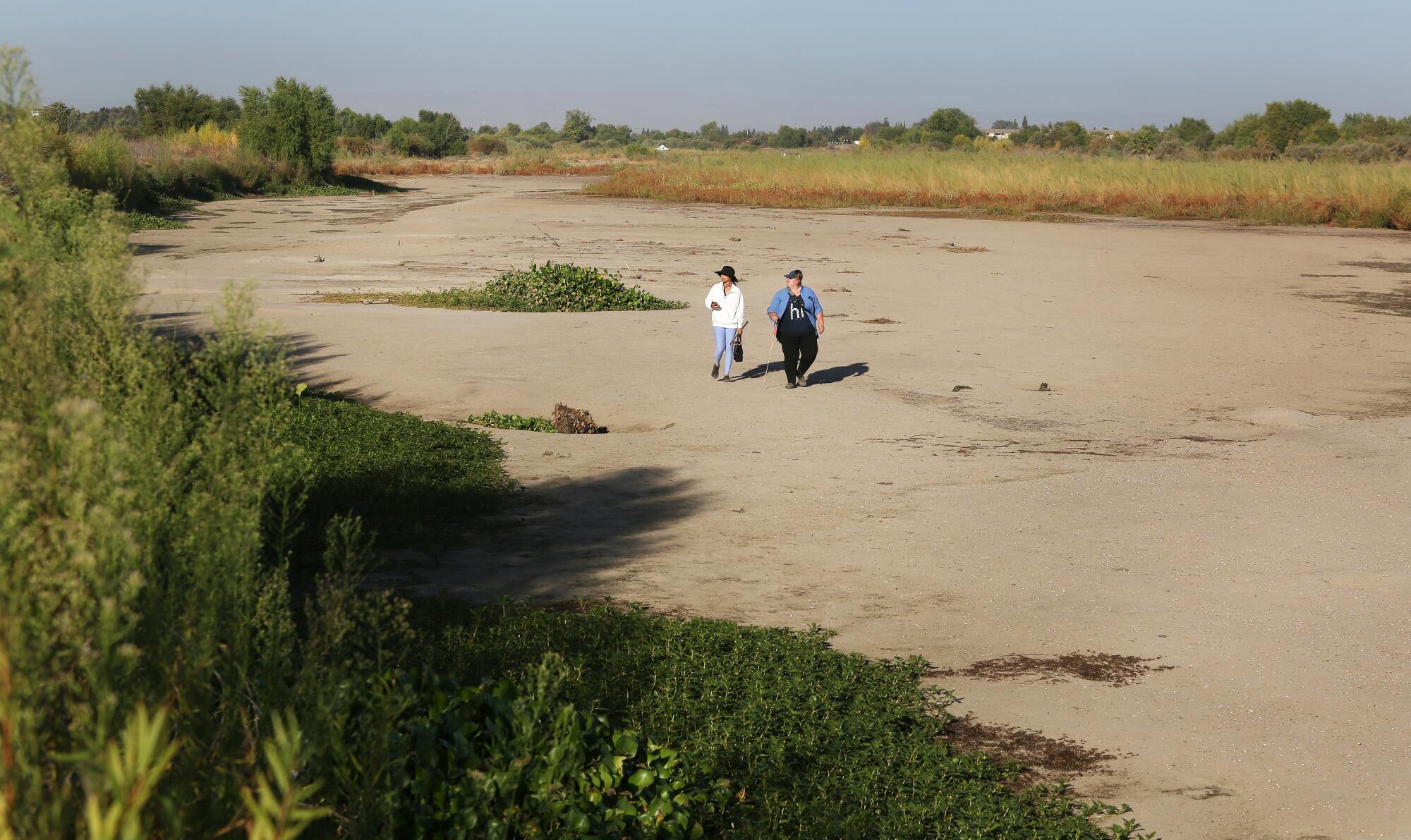
“It’s evaporating so quickly,” McNeish said one morning last week as she walked the riverbed toward two stagnant ponds.
A stench of decay drifted in the air. Dead fish lay scattered on the sand, drying in the sun among buzzing flies.
McNeish, who has examined the fish carcasses since late August, has identified non-native species including bass, sunfish, bullhead catfish and mosquitofish. She and her students have also found native Sacramento suckers.
“These are some of the biggest ones I’ve seen,” graduate student Alexandra Brown said as she approached several dead fish.
Aggressive and impactful reporting on climate change, the environment, health and science.
She stopped and took a picture of a nearly 2-foot-long carp, which lay glistening by the edge of a stagnant pool. The murky water was filled with the dark shapes of other fish that were swimming slowly, with nowhere to go.
Brown, who grew up in Bakersfield, said it has been disheartening and frustrating to see so many fish suffering as they are stranded by the receding water.
“I was tearing up the first time that we started seeing the fish flopping,” she said. “There was nothing we could do.”
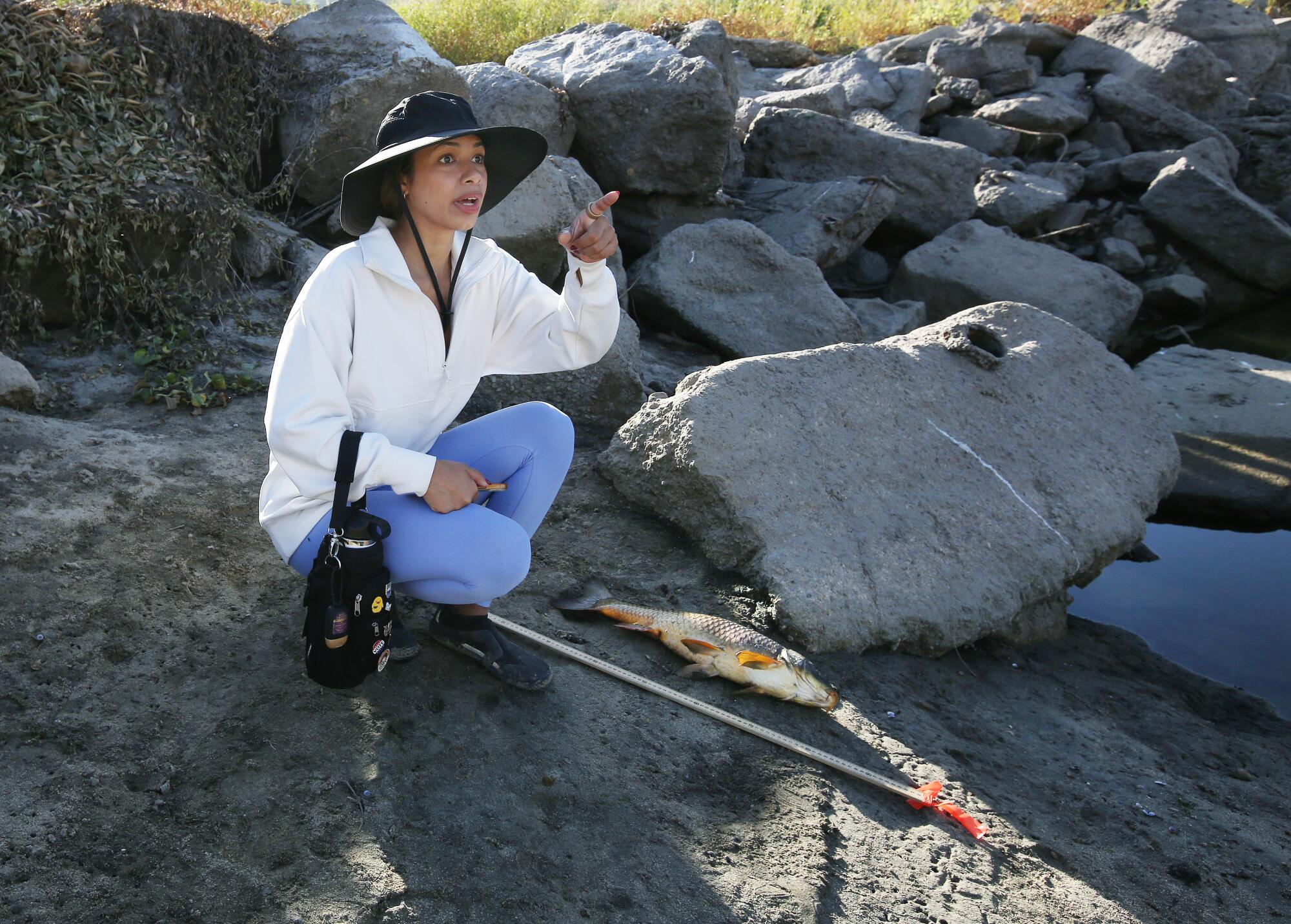
During her childhood, Brown enjoyed visiting a stretch of the river at Hart Memorial Park on the northeast side of Bakersfield, where there has long been flowing water. But for much of her life, the water has been so heavily diverted that the riverbed in the city has usually sat dry.
That changed in early 2023, when the river swelled with runoff from historic winter storms and resumed flowing through the city.
“It’s just really, really beautiful when you get to have a flowing river and see how much is supported by that,” Brown said.
“Now it’s like hardly anything is left alive,” she said. “That there has been so much death is very, very disappointing, considering how full of life this was.”
The Kern River has long been a dry riverbed in downtown Bakersfield. A group of residents is pushing to bring back a flowing river.
McNeish said she was unaware that the river’s flow would shrink so dramatically when she started the ecological monitoring surveys with her students in July.
In late August, they began to notice the water retreating, leaving sandbars exposed. Since then, McNeish estimates that water has stopped flowing or dried up completely along more than five miles of the river.
McNeish said she hopes the data she and her students are collecting will provide a detailed picture of how the loss of flows has affected fish and other aquatic life, and will help local officials consider ways of avoiding such ecological damage in the future.
Walking on the sandy riverbed, McNeish used a yardstick to estimate how much the water had receded in an isolated pond since her last visit. She called it the “snorkel pool,” because she had previously snorkeled in clear water here and recorded video of the fish. Now, the pond was murky, and a cormorant stood hunting at the water’s edge.
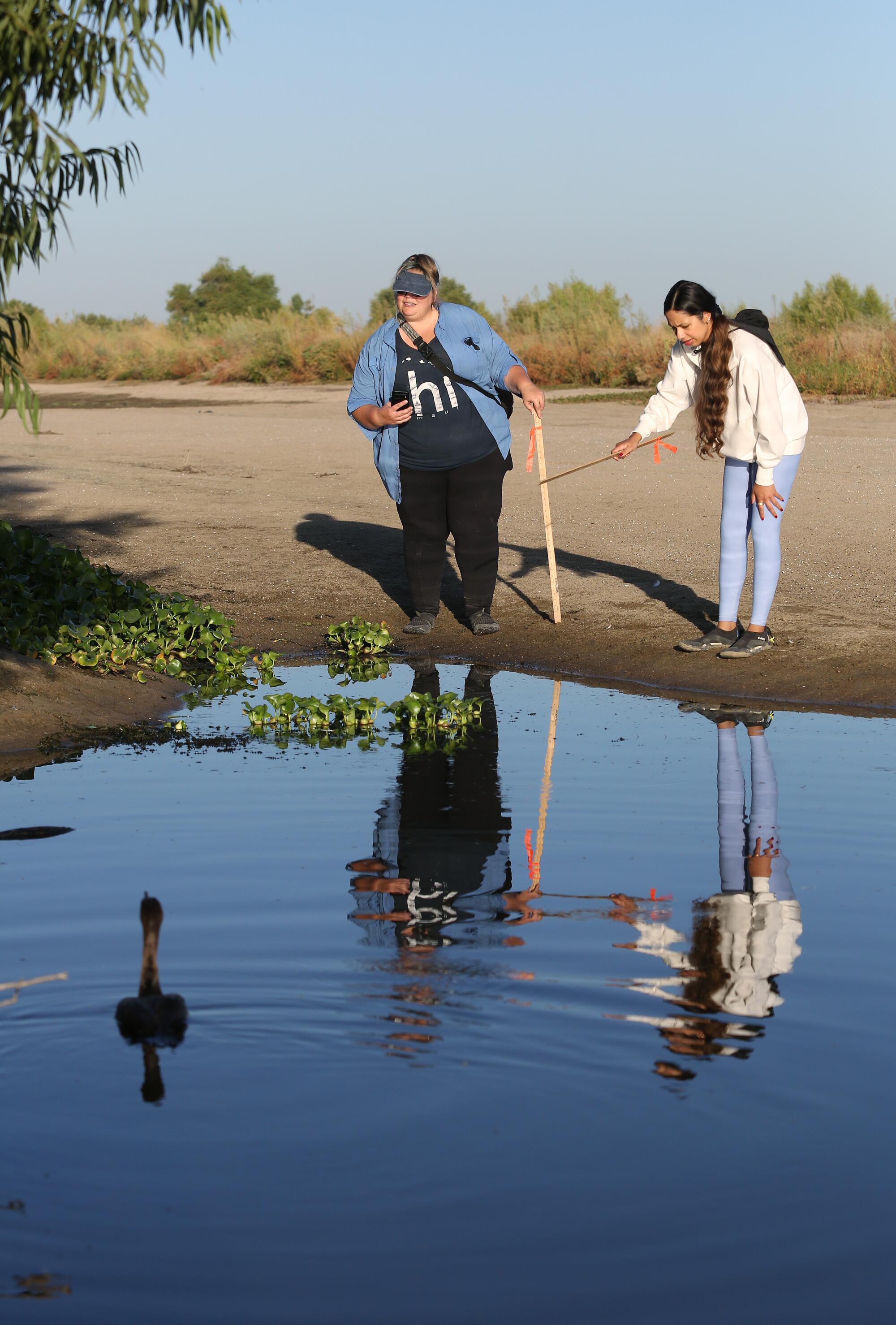
“There’s a lot of fish trapped here, and it’s good feeding grounds for this bird — for now,” McNeish said.
At another point, McNeish stopped at a dry depression and poked her yardstick into tangled aquatic plants, finding dead tadpoles. Where days earlier there had been a pond, dozens of fish carcasses lay on the sand among clam shells.
“There was water here on Saturday,” she said.
The two drove upriver to another research site. They walked across a bike path and descended into the river channel, where they found shallow water flowing. McNeish said the water has been dropping at this site, too.
As McNeish and Brown stood chatting, a woman emerged from the vegetation and introduced herself.
Bonnie Compton said she has been living along the river for more than a decade. She said she lives in a tent with her husband, and they have been alarmed by the sudden drop in the river and the dying fish.
“We used to be able to sit and watch the fish and enjoy the view,” Compton said.
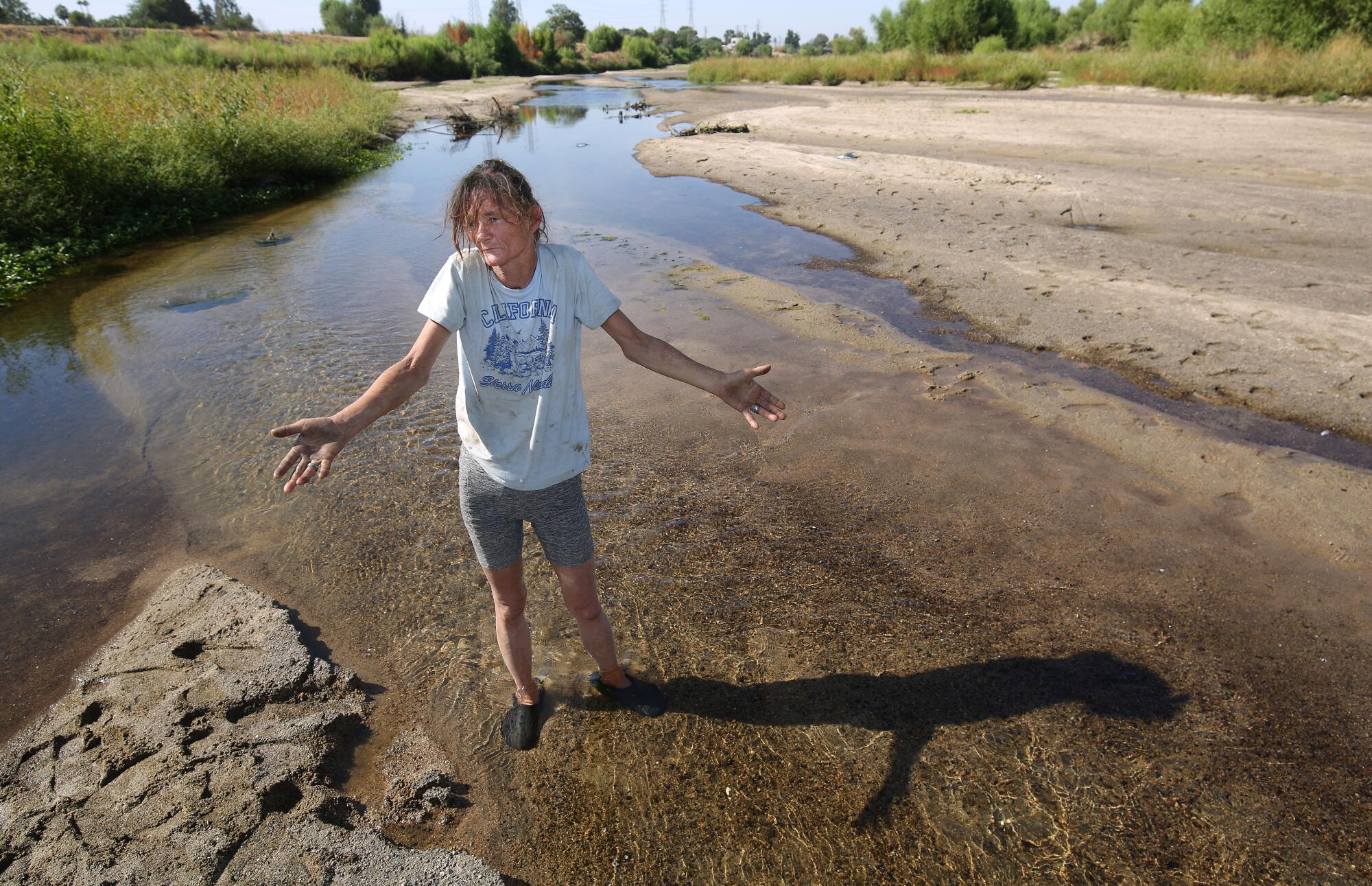
“This place had actually started to become beautiful again, and now it’s turning into the desert. It’s horrible,” she said. “They’re killing the fish. They’re killing our wildlife. Everything’s dying.”
Compton blamed local officials and said she suspects the water shutoff is linked to efforts by city workers to dismantle encampments and drive away homeless people.
“This is public ground, and they’re taking the water away from the public,” Compton said. “We want the water back.”
Her demand echoes similar calls by environmental activists. When six environmental groups sued Bakersfield in 2022, they argued that allowing water diversions to dry up the river violates California’s public trust doctrine, the principle that certain natural resources must be preserved for the public.
California legislators passed a bill to increase fines for those who violate the state’s water curtailment orders. The measure awaits Gov. Newsom’s signature.
The city controls several weirs where water is diverted. Some of the water is used in Bakersfield, but much of it is used by agricultural water districts to supply farms that produce almonds, pistachios, grapes, oranges and other crops.
The appeals court ruling earlier this year froze a judge’s order that had for months required sufficient water to keep the river flowing and provide for fish. That decision effectively allowed for the river to dry up while the case is pending in Kern County Superior Court, said William McKinnon, a lawyer for the group Water Audit California, one of the plaintiffs. Environmental groups petitioned the California Supreme Court to challenge that ruling, but their petition was denied last month.
“Until recently, water was left in the river because Bakersfield chose to do it, and now they don’t choose to do it,” McKinnon said. “They turned off the water, and all the fish died. But we’ll get to trial sometime.”
The dewatering of the river and the mass fish die-off, which were first reported by the news website SJV Water, have sparked an outpouring of concern in the community.
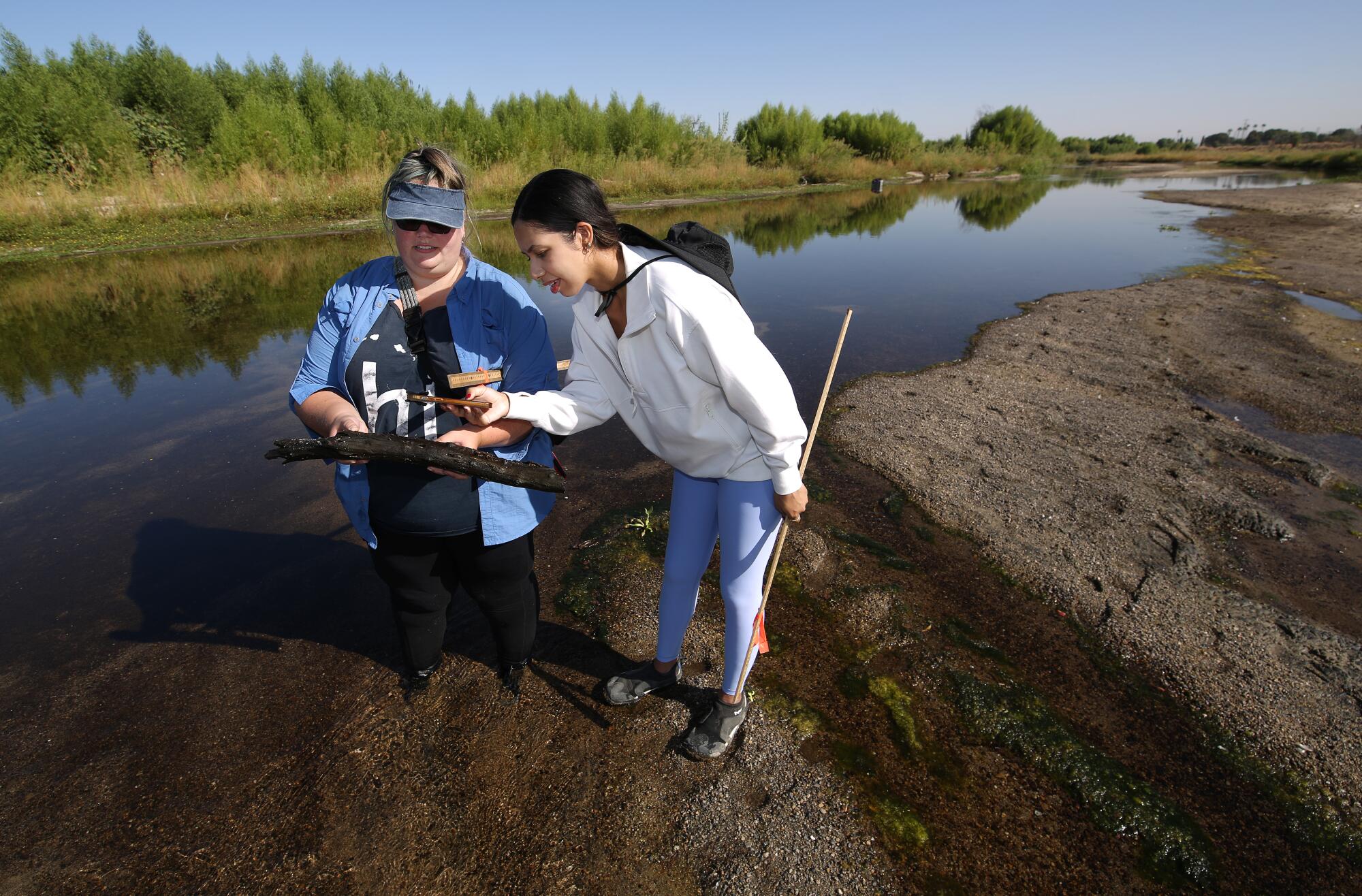
Officials with the California Department of Fish and Wildlife received complaints and are reviewing information about the fish deaths as they investigate whether there was a violation of state law, said Julie Vance, the department’s regional manager. One relevant provision, Section 5937 of the state Fish and Game Code, states that the owner of any dam must “allow sufficient water at all times to pass… to keep in good condition any fish” that exist below the dam.
The investigation is somewhat complex because multiple entities control water in the city, Vance said.
“Obviously, it’s a really unfortunate situation,” Vance said. “I think everyone was pretty excited to have water in the river again, and it’s unfortunate that it ended this way this summer.”
Siding with environmental groups, a judge has ruled that Sonoma County must take action to protect creeks and salmon from excessive groundwater pumping.
At a Bakersfield City Council meeting last week, several residents denounced the fish kill and urged council members to return water to the river.
Kelly Damian, a spokesperson for the group Bring Back the Kern, urged city officials to “work together to create a healthy, flowing river.”
“We want our river back,” Damian said. “It is not an easy task. We are up against a lot. We’re up against climate change, a vast network of canals. We’re up against a highly financed industry, but really the most difficult thing that we are up against is an old way of thinking.”
Councilmember Eric Arias told residents that he has heard their concerns and sees a need for better communication. He suggested starting regular meetings on the subject.
“Three thousand fish dead in the river is a failure on our part, and I think we could do better,” Arias said.
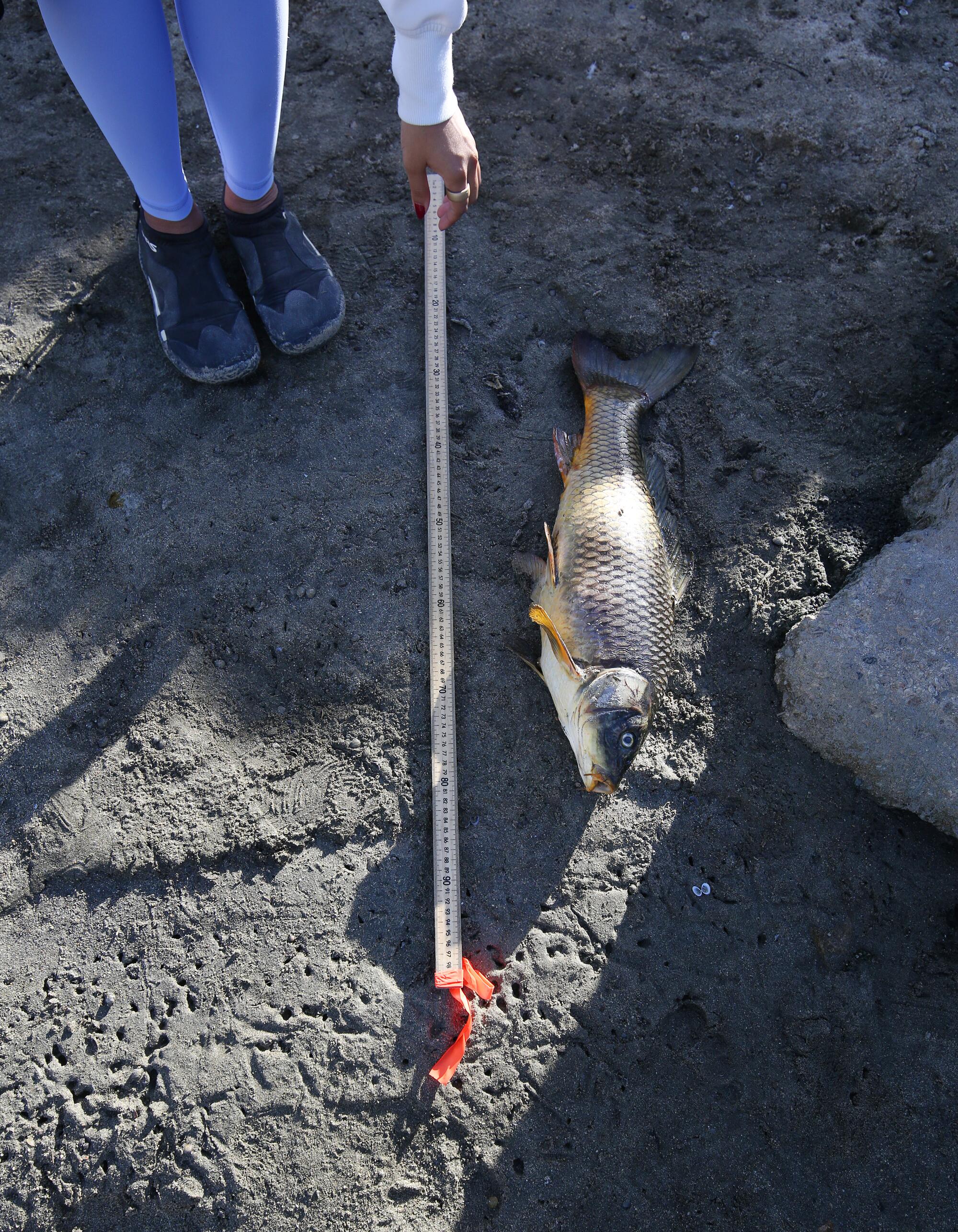
The city said in a Sept. 3 news release that its water department was “reducing water flows” in the river to carry out infrastructure work, including maintenance of weirs and removal of sediment from the channel.
Councilmember Bob Smith stressed that the recent court decision led to the dewatering of the river.
“We ran what water we had, what water we have rights to, as long as we could,” Smith said.
The city has saved some supplies upstream in Lake Isabella reservoir to prepare for a potential dry year, officials said, and much of the river’s flow is now being diverted to agricultural water districts.
Smith said he and other officials would like to “get more water in the river” and “we will continue with you to work in that direction.”
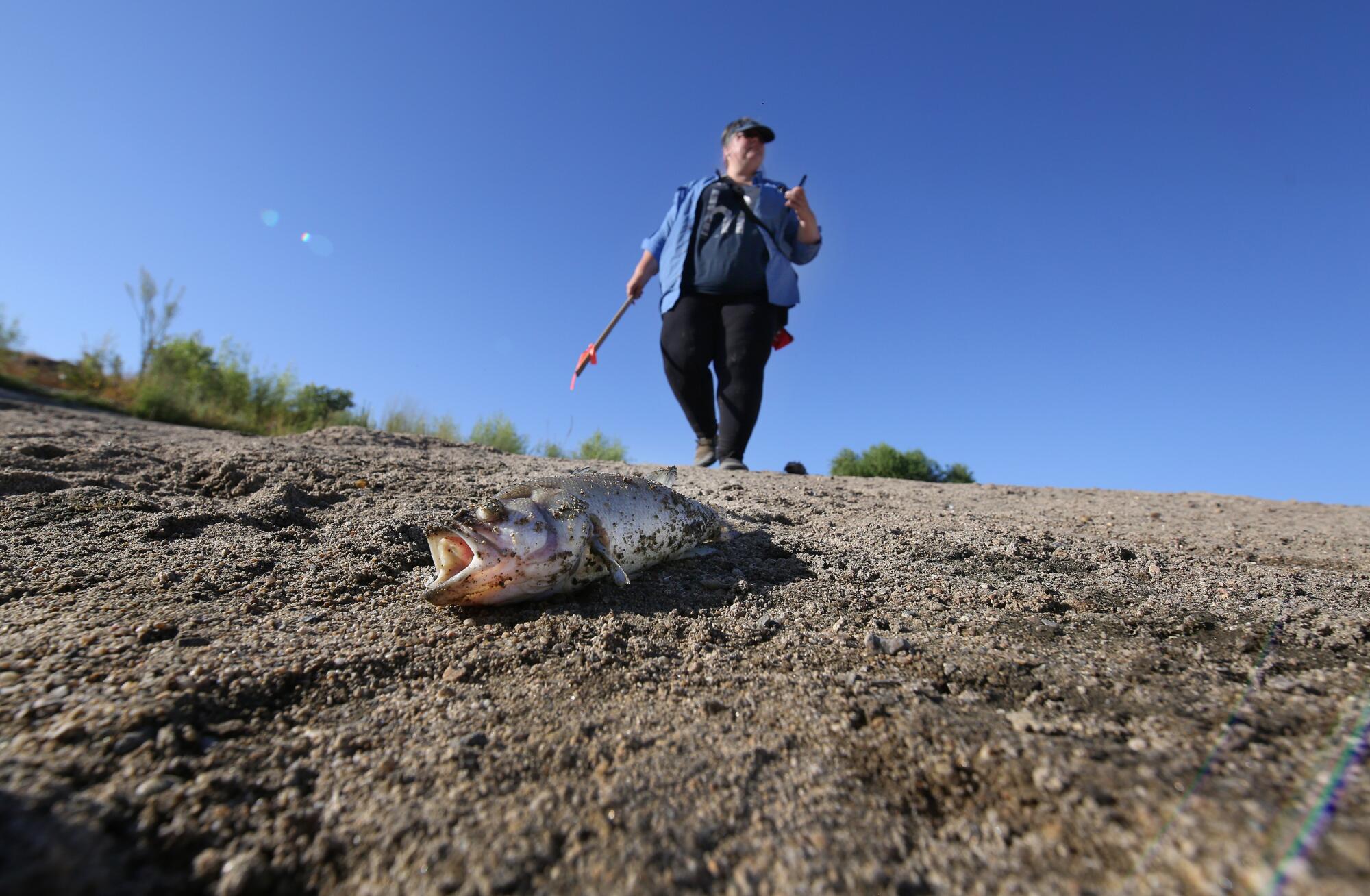
Bakersfield City Atty. Virginia Gennaro suggested residents should take their message to agricultural irrigation districts that use much of the water, including Kern Delta Water Storage District and North Kern Water Storage District.
“Talk to them about why you want water in the river,” Gennaro said. “Be as direct with them as you have been with us.”
Damian said after the meeting that she was disappointed with the council’s response.
“I did not hear one single city leader say that they were really going to champion this issue,” she said. “This was performative leadership. It was not real leadership.”


